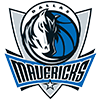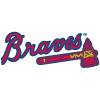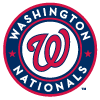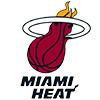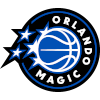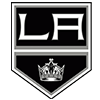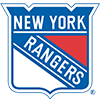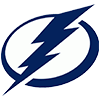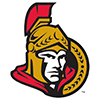Here are post-draft PPR rankings for the 2021 rookie class. Obviously, after the top 15 or so most of these players aren't draftable in most redraft formats. Consider it more of a watch list from that point.
For market reference purposes each player will have their post-draft BestBall10 ADP listed when applicable.
1. Najee Harris, RB, PIT (24.0 ADP)
The Steelers probably mean to give Harris more work in 2021 than the Jaguars do Travis Etienne, so Harris' floor advantage in redraft is difficult to dispute. Etienne was never a 25-touch running back even in theory, and the Steelers need to get a big return from Harris to make effective use of their 24th overall selection. Harris' rookie season might resemble something like that of Josh Jacobs, and usage volume has propelled standout fantasy value for players worse than them both in the past.
2. Travis Etienne, RB, JAC (45.91)
Etienne will likely need to be much more efficient than Harris to exceed Harris' 2021 fantasy output. In PPR in particular that's a totally possible outcome, but it sets a high bar for Etienne to clear and therefore might not be likely. I do expect Etienne to have the better return for the draft capital, especially if people are taking Harris in the first 15 picks, but Etienne would probably need to average something like 1.5 more yards per carry than Harris while matching his touchdown volume to post the higher point count. This possibility shouldn't be ignored, however – Trevor Lawrence's arrival means the Jaguars will score more points than previously, and if Etienne is in a good enough offense he can turn into an Alvin Kamara-type producer.
3. Kyle Pitts, TE, ATL (76.18)
Hayden Hurst is a blocker from now on. His presence doesn't matter for Pitts. Julio Jones and Calvin Ridley can't be displaced in a pass-catcher rotation, of course, but by tight end standards the third-leading pass catcher for the Falcons should be a profitable role, and even in his young age it's unlikely that Pitts can be slowed by the likes of Hurst or Russell Gage. Pitts' price point could become an issue – the hype is both loud and justified and will probably only get louder – but the possibility of performance failure simply seems non-existent.
4. Trevor Lawrence, QB, JAC (116.45)
Perhaps this is high for Lawrence, but with Aaron Rodgers' situation uncertain and players like Jalen Hurts/Tom Brady going as high as the eighth round in best ball drafts there is more value in Lawrence than generally assumed. Lawrence is not just a compelling prospect as a passer – his abilities as a runner are drastically understated in the general narrative. He's not a Lamar Jackson, but he's in prime Russell Wilson category as far as the danger posed on any given rush attempt. Did you see how Justin Herbert's rookie year went? Lawrence will start all year and is a much better prospect, including more dangerous as a runner.
5. Ja'Marr Chase, WR, CIN (58.73)
Chase's baseline target count should be right around 100. Last year Tee Higgins finished with 108 targets as an (overqualified) second-round pick, Tyler Boyd logged 110 in 15 games, and A.J. Green claimed 104 (with disastrous results). Chase was of course a lethal downfield receiver at LSU and should see plenty of such reps as a rookie, but he probably offers more short and intermediate utility than Higgins, which means Higgins might be the one left with the highest average depth of target between the three. Generally ADOT has a slight downward pressure on per-snap target rates, just because downfield passes are harder to complete, so it's possible that Chase matches or exceeds Higgins' target count even with Higgins being a supremely talented and more proven player. This is to say that, even if Higgins is the real life WR1 for Cincinnati, it might be Chase who comes out ahead in PPR scoring if Higgins does indeed end up with the higher ADOT. Of course, the floor is less than certain for a rookie competing with two strong veterans, and Chase's ceiling can only theoretically go so high with them present. Joe Burrow's effectiveness might suffer in his attempted swift return from a brutal knee injury, too.
6. DeVonta Smith, WR, PHI (86.0)
It's not clear just what offensive coordinator Shane Steichen's scheme will look like in Philadelphia, but even if they run a more tight end-heavy scheme than he did with the Chargers it seems like Smith is ticketed for at least 750 snaps in his rookie year, with something around 950 well within reach. He's at least as competent at outside receiver as Jalen Reagor, and both of them are likely better than Travis Fulgham. Smith is also likely the Eagles' top slot receiver ahead of Greg Ward. This all sets up for him to lead the Eagles in targets as a rookie, which is an important starting point. What's less clear is how high that team-leading target count might be in a scheme where Jalen Hurts will need to run much more than most other quarterbacks, just as it's unclear how effective Hurts will be with the pass attempts he does throw.
7. Javonte Williams, RB, DEN (54.91)
For 2021 it's difficult to safely distinguish the offensive share projections for Williams and someone like former North Carolina teammate Michael Carter, who went to the Jets in the fourth round. They're both players with clear pluses and certain upside scenarios that are easy enough to imagine, but with no rock-solid assurances that those scenarios will be brought forth by the surrounding circumstances. For Williams it's easy enough to say he will do well if given the opportunity, but that level of opportunity is difficult to discern with Melvin Gordon all but locked onto the roster. Even former third-round pick Royce Freeman is worth pondering as an obstacle – Freeman has disappointed in the NFL, but he's more athletic than Williams and was a better collegiate player at Oregon. Freeman is faster than Williams even at 17 pounds heavier
8. Trey Sermon, RB, SF (124.64)
Sermon's issue is similar to Williams' – we can imagine him producing and providing high-upside production if he gets the reps, but with Raheem Mostert, Jeff Wilson, Wayne Gallman and Elijah Mitchell around this backfield's touch distribution could be unusually horizontally-oriented. Gallman and Mitchell probably won't be problems for Sermon, but Mostert and Wilson were both effective in 2020, and Mostert in particularly can't be imitated for his explosiveness. But if Mostert were to get hurt and Sermon were splitting touches with Wilson, that'd be the sort of scenario where Sermon would have top-15 running back upside within realistic reach. There's a lot of possibility here, just nothing in the way of certainty.
9. Elijah Moore, WR, NYJ (185.45)
First we need the Jets to get rid of the redundant but competent Jamison Crowder, but if they do then Moore will have a chance to establish himself as the Jets' top receiver even in his rookie season. Corey Davis and Denzel Mims are of course promising as the locked-in outside receivers, but Moore projects uniquely well in the slot and should earn his share of outside snaps, too. Playing at a lower depth of target than Davis or Mims, Moore might be able to match or exceed their target counts even if he lags in their snap count by 200 or so. Moore was a ruthlessly productive receiver at Mississippi and was timed at 4.35 seconds in the 40-yard dash at his pro day, so he's much more qualified for the task ahead of him than the average rookie. It's a mistake to dismiss him as one. If the Jets don't cut or trade Crowder, though, then Moore probably needs to be moved down to 20th or so in these redraft rankings.
10. Terrace Marshall, WR, CAR (192.55)
Curtis Samuel's exit leaves a big void in the Carolina offense: 97 targets and 41 carries in 15 games, to specific. Marshall isn't a candidate for those carries – D.J. and David Moore are the only Carolina wideouts who are – so Marshall's fit as the potential WR3 in Carolina will have to look different than it did with Samuel. Tight end pickup Dan Arnold also figures to poach some of those slot snaps. But Marshall does project well in the slot, if only a more downfield-oriented one than Samuel served as in 2020. So he should be in the hunt, and if he's in the hunt there's a good chance he acquits himself quite well. Not just that, but Sam Darnold is much more likely to throw downfield (and throw downfield well) than Teddy Bridgewater or P.J. Walker were in 2020.
11. Michael Carter, RB, NYJ (121.73)
Carter could be the Jets' primary passing down back in 2021, in which case he would have general flex viability in PPR scoring. He was consistently a very productive runner at North Carolina, too, but in that specific capacity he might not be so unique from Tevin Coleman and Ty Johnson, both of whom are bigger and faster than Carter. Fourth-round 2020 pick La'Mical Perine probably can't be ruled out of the picture, either.
12. Jaylen Waddle, WR, MIA (108.91)
Waddle is supremely talented and has some immediate upside in Miami, though the battle for targets could be more intense there than for Marshall in Carolina or Moore with the Jets. Will Fuller was signed to a 15-game contract to more or less serve the same function Waddle hopes to in theory, and the offense otherwise figures to give DeVante Parker and Preston Williams a chance at starter-level snaps. Mike Gesicki plays a lot of slot receiver in this offense, and Lynn Bowden will probably draw a non-trivial number of snaps and targets, too. But if Fuller should get hurt and the other obstacles move aside for whatever reason, then Waddle would have no obvious cause for caution.
13. Trey Lance, QB, SF (205.73)
Lance's dual-threat upside is so high in Kyle Shanahan's scheme that he's worth owning for upside even if he doesn't start the season over Jimmy Garoppolo. Garoppolo is bad – there's no question about this – and even if Shanahan is confused toward some other assumption he won't have the job security luxury of standing by it if the 49ers begin the year with poor quarterback production. There's also a chance Lance does just start the whole year over Garoppolo, because Garoppolo is bad and Lance might not be.
14. Zach Wilson, QB, NYJ (191.18)
Wilson will almost certainly start the year at quarterback for the Jets, but his low playing weight (probably around 205 pounds at 6-foot-2) makes him a clobber risk and his playing circumstances will be much more stressful than anything he played through at BYU last year. The 2020 film that propelled Wilson's hype mostly looks like someone playing 500 – it bears few similarities to NFL quarterback play. His upside can't match that of Lance, and their respective floors might be closer than generally assumed.
15. Justin Fields, QB, CHI (166.64)
Fields' rare running ability makes his upside higher than Wilson's, but unlike with Lance in San Francisco, Fields can't bank on his coach making the passing part of playing quarterback easy. Shanahan reduces the game to tee-ball for quarterbacks, but Fields will have to navigate a cold-weather role in a dubious offense with a questionable offensive line, and all that's assuming he beats Andy Dalton for snaps. Dalton is of course not good, but he knows a lot of tricks that Fields won't know for at least a year or two, and in the meantime he might need to be better than Dalton just to come across as equally good to the Chicago coaches.
16. Chuba Hubbard, RB, CAR (145.73)
This one's pretty simple: Hubbard probably won't play if Christian McCaffrey stays healthy, but if McCaffrey gets hurt then Hubbard should be able to do what Mike Davis did last year, if not more.
17. Rhamondre Stevenson, RB, NE (222.64)
Stevenson is very light-footed for such a big back, and he was highly effective on passing downs for Oklahoma. That the Patriots spent a fourth-round pick on him demonstrates some meaningful level of fondness, too. The problem is the pass-catching work in this offense is hogged by James White, and it's unrealistic to think Stevenson can compete with Damien Harris or Sony Michel as a pure runner.
18. Kenneth Gainwell, RB, PHI (124.09)
Gainwell is basically who people thought Boston Scott was, but that's still a player who probably needs a Miles Sanders injury to come through as a practical flex spot option in PPR scoring. But if Gainwell gets the work he'll be intriguing – he was as good or better at Memphis than Antonio Gibson, Darrell Henderson and Tony Pollard were, and both his pass-catching ability and timed speed are clearly of NFL caliber.
19. Ihmir Smith-Marsette, WR, MIN (N/A)
Chad Beebe is an urgent drain on the offense but coach Mike Zimmer apparently just likes a good nepotism case. To be clear, I'm talking about Beebe, not Minnesota offensive coordinator Klint Kubiak or co-defensive coordinator Adam Zimmer. Bisi Johnson is clearly better than Beebe but couldn't earn reps ahead of him last year, even after the Vikings opened the season with Johnson starting ahead of Justin Jefferson! Starting Jefferson was only one of two moves the Vikings should have made, but perhaps Smith-Marsette will intrigue Kubiak more than Johnson did. Smith-Marsette would be somewhat interesting if so, because Adam Thielen has had some durability issues the last two years and Smith-Marsette otherwise appears talented. He's skinny but fast, and at Iowa he demonstrated both the ability to separate as a route runner and generate yardage as a ballcarrier. Over Smith-Marsette's age-20 and 21 seasons he produced at a high level, catching 71 of 117 targets for 1,067 yards and nine touchdowns – a 24.4 percent share of the Iowa passing yardage on only 18.6 percent of the targets. Smith-Marsette's catch rate (60.7 percent) was slightly above the team baseline of 58.4 percent, and his YPT mark (9.1 yards) was far above the team's 7.0 YPA. Smith-Marsette otherwise took 34 carries for 272 yards and four touchdowns at Iowa while returning two kickoffs for touchdowns (28.7 YPR).
20. Rashod Bateman, WR, BAL (163.64)
Bateman is one of several receivers in this draft class who demonstrate major talent but potentially face more difficult immediate circumstances than some of their peers. His age-adjusted production at Minnesota grades highly for both share and efficiency numbers and his workout numbers tested cleanly (4.43 40, 123-inch broad jump), so basically every indicator argues that he'll be an above average starter at some point. The question is whether he can draw enough target volume as a rookie to demonstrate much either way – Marquise Brown and Mark Andrews will remain prominent, and free agent pickup Sammy Watkins is probably overlooked after running some of the less-enviable routes behind Tyreek Hill and Travis Kelce the last three years. All of this is occurring within the concern over the fact that Baltimore doesn't aspire to be among the league leaders in passing volume. For dynasty rankings Bateman places higher than this.
21. Rondale Moore, WR, ARI (163.0)
If the Cardinals keep the same personnel approach as last year then we might expect Christian Kirk to take a lot of the reps that previously went to Larry Fitzgerald, and Moore a lot of the reps that previously went to Andy Isabella. A.J. Green will probably get the first shot at most of the outside reps opposite DeAndre Hopkins, and it's that snap/target supply Moore would likely need to tap into to show his potential. There's also a chance Moore might draw carry opportunities that didn't exist in this offense previously, especially given how underwhelming Chase Edmonds/James Conner are as a top running back tandem.
22. Dyami Brown, WR, WAS (235.45)
Both Terry McLaurin and Curtis Samuel are too talented for Brown to catch in this offense. They're both toolsier and more skilled than the rookie. But Brown has a shot at emerging as the clearly best third receiver in this offense, and in the event that McLaurin or Samuel miss time Brown might have what it takes to thrive as a starter, even as a rookie. Brown might be raw in some regard or another in his rookie year, but as a downfield threat he already seems polished, if not innately skilled. Ryan Fitzpatrick's chucking tendencies probably fit Brown better than a checkdown quarterback would, in other words.
23. D'Wayne Eskridge, WR, SEA (235.18)
Eskridge has a real shot at winning the WR3 role in Seattle. It'd almost be a disappointment if he didn't, actually – Eskridge turned 24 in March, so he has no good excuse to lose in a competition to second-year wideout Freddie Swain, who won't turn 23 until August. There might be some limitations otherwise with both Eskridge's abilities and circumstances, because Eskridge (5-foot-9, 190 pounds) isn't built like a conventional outside receiver and can't beat Tyler Lockett for slot reps if it comes down to the two of them. If Eskridge can't earn reps outside then there's a chance that undrafted rookie Tamorrion Terry might steal snaps from him.
24. Nico Collins, WR, HOU (240.73)
Collins is toolsy at 6-foot-4, 215 pounds and offered clean production at Michigan, so it wouldn't be shocking if he ended up the next Kenny Golladay or some such thing. The situation surrounding his role and the general solvency of his team is murky in the meantime, though – there's truly nothing to take for granted with the Texans' quarterback at this point, and it could get about as bad as possible before it's settled. No turn for the better is guaranteed in Houston, but at least Collins only really has three receivers ahead of him on the present depth chart. One of those (Brandin Cooks) has a disheartening history of concussions, another (Randall Cobb) is a slot wideout who's mostly just on the team because Bill O'Brien gave him too much guaranteed money, and the third is Keke Coutee, who's been promising but mostly restricted to the slot, where he's blocked by Cobb.
25. Kadarius Toney, WR, NYG (198.82)
Even if the Giants trade Evan Engram it's difficult to see how they'll cut out room on the field for Toney to draw targets on any regular basis. He'll likely need to get his targets close to the quarterback, which generally means tendency toward the slot and underneath. Engram and Sterling Shepard run in that part of the field, and Saquon Barkley is running routes not too far from there too. Shepard and Barkley aren't losing to Toney unless it's a scripted target. The Giants will certainly feature some of those very plays, but in their base plays Toney can't realistically win targets over Golladay, Shepard, Slayton and Barkley. If Shepard gets hurt then Toney might be in a position to produce.
26. Amon-Ra St. Brown, WR, DET (224.27)
Depending on the structure of the Lions offense there's a chance St. Brown could be useful as a rookie in PPR this year, but his route to immediate success is generally blocked at most turns. He's unlikely to compete for snaps regularly at outside spots, so he'll need to be the clear winner in the competition for slot snaps. He could very well pull it off – the new front office appeared to prioritize boundary speed by signing Tyrell Williams and Breshad Perriman, both of whom offer meaningful utility as decoys but can only take on so many targets with their uneven skill sets and high ADOT. If the main function of Williams and Perriman is to deter the safeties from creeping upward, then that's a function Quintez Cephus can't compete with outside, potentially rendering Cephus the primary competition for St. Brown in the slot. Cephus might play well in the slot, but he's actually earned most of his production going back to Wisconsin while playing on the outside. Then again, there might not be as many slot snaps available in this offense as some others – new coach Dan Campbell brought blocking tight end Josh Hill over from New Orleans in free agency, and if Hill plays upwards of 500 snaps then the Lions might take slot snaps away from St. Brown and Cephus to instead create target reps for T.J. Hockenson and D'Andre Swift in the slot. Update: Hill ended up retiring, which is probably a slightly positive development for St. Brown and Cephus.
27. Mac Jones, QB, NE (235.27)
Cam Newton has an injury history and perhaps invites further injury with his rushing usage, but if he's healthy then Newton is the better bet to exploit the system and personnel New England built on offense this offseason. They paid a lot to add Jonnu Smith and Hunter Henry and they mean to use them both, and Newton's rushing threat is something the Patriots can leverage off the attention paid to those tight ends. All of that plays up the hard-charging dive threat Damien Harris functioned as last year. It's a cumulative rush threat that demands the defense's focus before the snap, but if the defense focuses on it too much then the playaction threat posed by Smith and Henry can capitalize on that. Jones is almost certainly the next starter in New England, but it's hard for him to match a versatile veteran like Newton in the short term.
28. Amari Rodgers, WR, GB (232.18)
Rodgers might get a few backfield snaps, but generally he needs to win reps in the slot, where Allen Lazard is formidable competition of a different aesthetic. Matt LaFleur is likely up to the task, but the Packers basically need new plays to make the most of Rodgers' abilities. Rodgers' collegiate production gives reason to think he'll do well with whatever opportunity he's given, though Green Bay's rapidly deteriorating situation with Aaron Rodgers casts a gloom over all of this.
29. Anthony Schwartz, WR, CLE (236.73)
Schwartz's speed should make him an immediate gadget-play and decoy option for the Browns, but he'll need multiple injuries ahead of him for more. Schwartz might need some development time given that he won't be 21 until September, and the Browns don't aspire to throw the ball that much.
30. Simi Fehoko, WR, DAL (N/A)
Fehoko offers height and speed, so he might be able to draw downfield targets if Dallas suffers multiple injuries at receiver. Fehoko is likely their WR5.
31. Jacob Harris, WR, LAR (N/A)
Harris has a very low floor but also a couple routes to upside in Los Angeles, where he might be the team's second-best deep threat after the brittle DeSean Jackson, and he might draw some of the reps that went to Gerald Everett previously at a tight end-like position. If injuries hit the Rams receivers or tight ends then Harris could pop up all of a sudden.
32. Cornell Powell, WR, KC (N/A)
Powell isn't assured anything as a fifth-round pick, but he should be in the running for the reps previously logged by Sammy Watkins, Demarcus Robinson and Byron Pringle, the latter two being the remaining competition.
33. Tommy Tremble, TE, CAR (N/A)
Tremble is athletic enough to run routes in the NFL and could develop a solid skill set in that capacity, but the risk in the meantime is that he more so gets blocking assignments early on.
34. Kylin Hill, RB, GB (239.0)
Hill's politics got him blacklisted but he should stick as depth in Green Bay. Hill could emerge as the backup passing-down back behind Aaron Jones, so if Jones were to miss time Hill might be able to force some sort of workload split with the otherwise heavily-favored A.J. Dillon.
35. Elijah Mitchell, RB, SF (238.09)
Like any running back, Mitchell would be very interesting if he sees snaps with the 49ers. Mitchell would be especially interesting, though, because at 5-foot-10, 201 pounds with a 4.35 40 his athletic traits are suspiciously similar to those of Raheem Mostert, who seems to fit the system quite well. Mitchell's problem is not just Mostert, but also Jeff Wilson and Trey Sermon. If any of those obstacles should move aside, though...
36. Chris Evans, RB, CIN (N/A)
Evans is athletic but struggled to earn reps as his Michigan career went along. He's behind Samaje Perine and no lock to finish ahead of Trayveon Williams.
37. Dez Fitzpatrick, WR, TEN (N/A)
Fitzpatrick seems like a Kevin Norwood kind of pick – someone who seems 'solid' in a variety of respects but more importantly has no standout traits, and whose collegiate production was buttressed by an age advantage over their peers. Fitzpatrick turned 20 toward the end of his freshman year, so even his otherwise good-looking numbers from that stretch of time are only worth so much after the age adjustment. With that said, it seems like A.J. Brown, Josh Reynolds, Anthony Firkser and maybe Marcus Johnson are the only pass catchers ahead of him in Tennessee.
38. Tylan Wallace, WR, BAL (N/A)
Wallace is severely overqualified for the role that likely awaits him in 2021. He's no guarantee to even be active on game days, though if he does somehow end up drawing targets there's reason to believe he'll do well with them. In the meantime he might be behind all of Marquise Brown, Mark Andrews, Sammy Watkins, Rashod Bateman, Devin Duvernay and Miles Boykin.
39. Pat Freiermuth, TE, PIT (N/A)
Freiermuth should play at least 500 snaps as a rookie, and upwards of 800 if Eric Ebron were to miss any time. Freiermuth seems less toolsy than some recent Penn State tight ends, but his pass-catching production in college was strong.
40. Hunter Long, TE, MIA (N/A)
Long might be as good as Freiermuth, but Long has two tight ends ahead of him (Mike Gesicki and Durham Smythe) rather than just Ebron.











